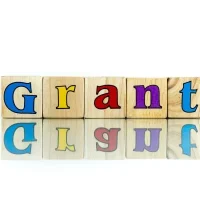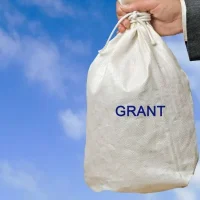Funding plays a pivotal role in the landscape of music projects and organizations, serving as the lifeblood that sustains creativity and innovation. Without adequate financial support, many artistic endeavors may never come to fruition, leaving a void in cultural expression and community engagement. Music projects, whether they are local initiatives or large-scale productions, require resources for everything from hiring musicians and securing venues to marketing and outreach efforts.
The absence of funding can stifle artistic vision, limit opportunities for collaboration, and ultimately hinder the growth of the music community. Moreover, funding is not merely a means to an end; it is a catalyst for fostering diversity and inclusivity within the music industry. Financial support enables organizations to reach underrepresented groups, providing them with platforms to share their unique voices and stories.
This inclusivity enriches the cultural tapestry of society, allowing for a broader range of musical genres and styles to flourish. In essence, funding is not just about sustaining existing projects; it is about nurturing the next generation of artists and ensuring that the music landscape remains vibrant and dynamic.
Different Sources of Funding for Music Projects and Music Organizations
The quest for funding can lead music projects and organizations to explore a variety of sources, each with its own set of advantages and challenges. Traditional avenues such as government grants and arts councils remain significant players in the funding ecosystem. These institutions often have specific mandates to support the arts, making them a reliable source for organizations seeking financial assistance.
However, competition for these funds can be fierce, requiring applicants to present compelling proposals that align with the funders’ objectives. In addition to government support, private foundations and philanthropic organizations have emerged as vital contributors to the music sector. These entities often focus on specific areas of interest, such as education, community engagement, or cultural preservation.
By aligning their missions with those of potential funders, music organizations can tap into these resources effectively. Furthermore, corporate sponsorships have gained traction in recent years, with businesses recognizing the value of associating their brands with artistic endeavors. This symbiotic relationship not only provides financial backing but also enhances the visibility of both the project and the sponsor.
Challenges in Securing Funding for Music Projects and Music Organizations
Despite the myriad sources available, securing funding for music projects and organizations is fraught with challenges. One of the most significant hurdles is the highly competitive nature of grant applications. With numerous organizations vying for limited resources, it is essential for applicants to differentiate themselves through innovative ideas and clear articulation of their impact.
This often requires extensive research and preparation, which can be daunting for smaller organizations with limited administrative capacity. Additionally, the fluctuating economic climate can pose a threat to funding stability. Economic downturns often lead to budget cuts in arts funding at both governmental and private levels.
As a result, organizations may find themselves scrambling to adapt to shifting priorities or reduced financial support. This uncertainty can create a cycle of instability that undermines long-term planning and sustainability. Furthermore, many organizations face challenges in demonstrating measurable outcomes, which funders increasingly demand as evidence of effectiveness.
This pressure can lead to a focus on quantifiable results at the expense of artistic exploration and innovation.
Successful Case Studies of Music Projects and Music Organizations that Have Secured Funding
Examining successful case studies can provide valuable insights into effective strategies for securing funding in the music sector. One notable example is the National Endowment for the Arts (NEA) grant awarded to a community-based music organization focused on promoting local artists. By emphasizing their commitment to community engagement and cultural diversity in their proposal, they were able to secure funding that not only supported their programming but also fostered partnerships with local schools and community centers.
This collaboration not only expanded their reach but also enriched the cultural fabric of the community. Another inspiring case is that of a nonprofit organization dedicated to providing music education to underserved youth. Through a combination of private donations, corporate sponsorships, and successful grant applications, they were able to establish a robust program that has transformed the lives of countless young musicians.
Their success can be attributed to their ability to articulate a clear vision and demonstrate tangible outcomes, such as increased student engagement and improved academic performance among participants. By showcasing these results in their funding applications, they effectively communicated their impact to potential funders.
Tips for Writing Successful Grant Proposals for Music Projects and Music Organizations
Crafting a compelling grant proposal is an art in itself, requiring careful attention to detail and a deep understanding of both the project and the funder’s priorities. One essential tip is to thoroughly research potential funders before submitting an application. Understanding their mission, values, and funding history can help tailor proposals that resonate with their objectives.
Additionally, it is crucial to clearly articulate the project’s goals, target audience, and anticipated outcomes. Funders are more likely to support initiatives that demonstrate a clear plan for success. Another important aspect is to include a well-defined budget that outlines how funds will be allocated.
Transparency in financial planning not only builds trust with funders but also showcases an organization’s commitment to responsible stewardship of resources. Furthermore, incorporating testimonials or case studies from previous projects can provide compelling evidence of an organization’s effectiveness and impact. Finally, seeking feedback from peers or mentors before submission can help refine proposals and enhance their overall quality.
The Impact of Funding on the Success and Sustainability of Music Projects and Music Organizations
The Long-Term Effects of Funding on Music Projects
The impact of funding on music projects and organizations extends far beyond immediate financial support; it shapes their long-term viability and success. Adequate funding allows organizations to invest in infrastructure, hire skilled personnel, and develop comprehensive programming that meets community needs. This investment not only enhances the quality of artistic offerings but also fosters a sense of stability that encourages creativity and innovation.
Expanding Reach and Impact Through Funding
Moreover, funding can significantly influence an organization’s ability to expand its reach and impact. With financial resources at their disposal, music organizations can explore new initiatives, collaborate with other artists or organizations, and engage with diverse audiences. This expansion not only enriches the cultural landscape but also strengthens community ties by fostering shared experiences through music.
The Importance of Sustained Funding
Ultimately, sustained funding is essential for ensuring that music projects continue to thrive, evolve, and contribute meaningfully to society. In conclusion, while securing funding for music projects and organizations presents its own set of challenges, it remains an essential component for fostering creativity and cultural expression. By understanding the various sources available, learning from successful case studies, and honing grant writing skills, organizations can enhance their chances of obtaining financial support.
Shaping the Future of Music in Our Communities
The impact of this funding extends beyond mere survival; it shapes the future of music in our communities, ensuring that diverse voices are heard and celebrated for generations to come.
For those involved in music projects and music organizations seeking funding opportunities, the National Leadership Grants for Museums in the United States offers a relevant resource. This grant supports projects that enhance the quality of museum services, benefiting communities through improved access to museum and library services. It is an excellent opportunity for museums that also focus on music-related exhibits and educational programs. For more detailed information on eligibility and application guidelines, you can visit the full article here.









































